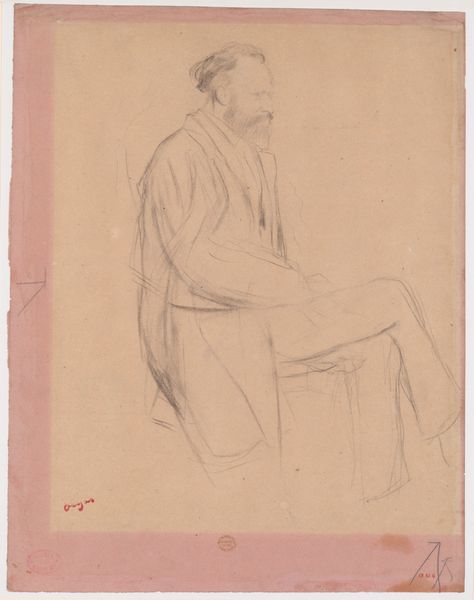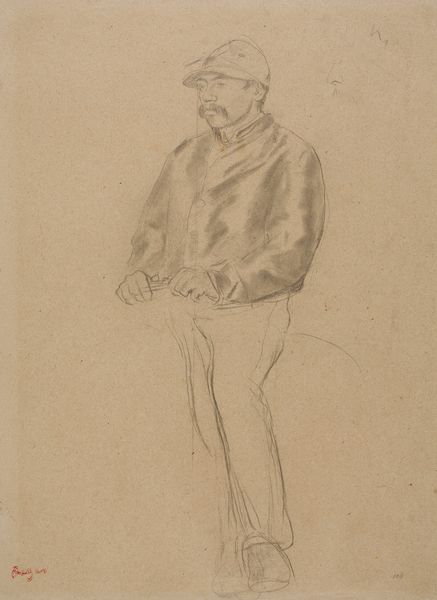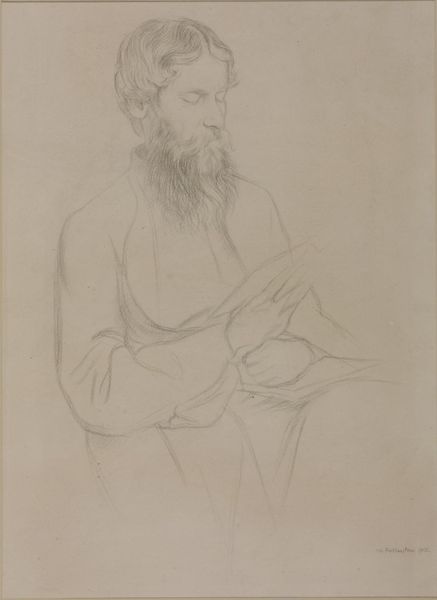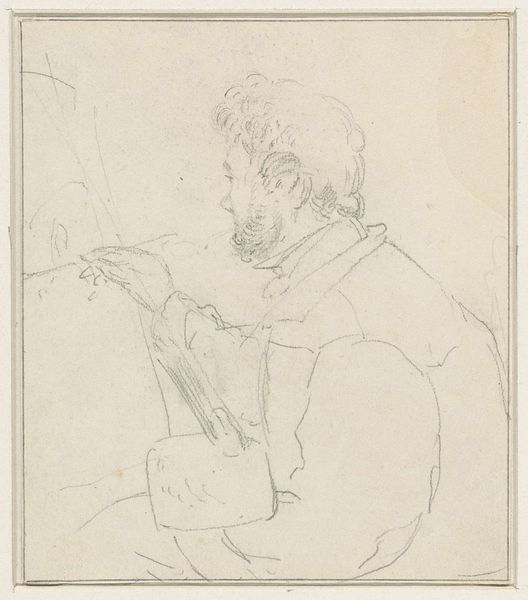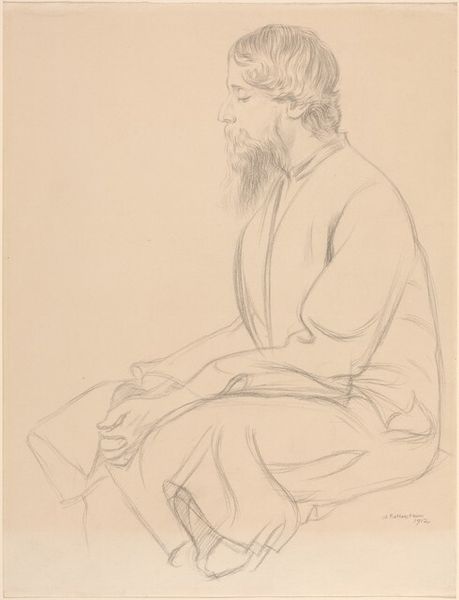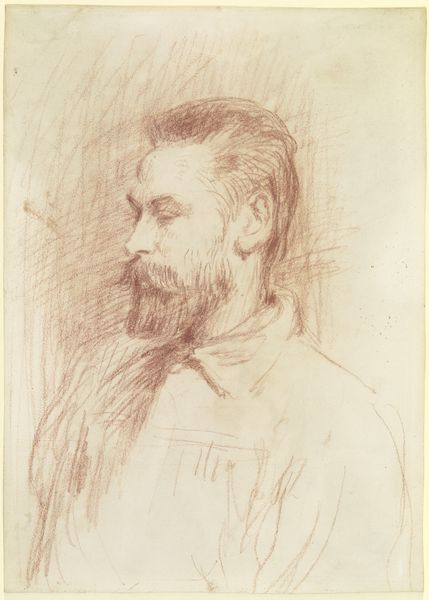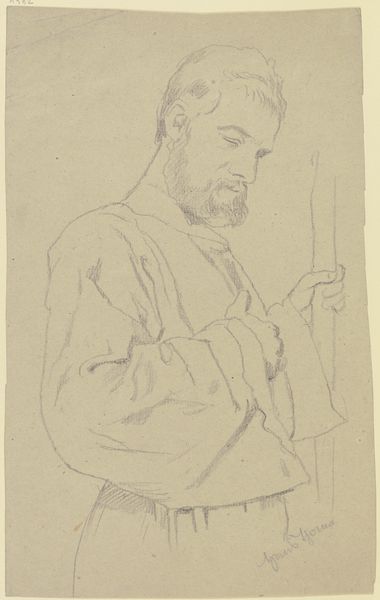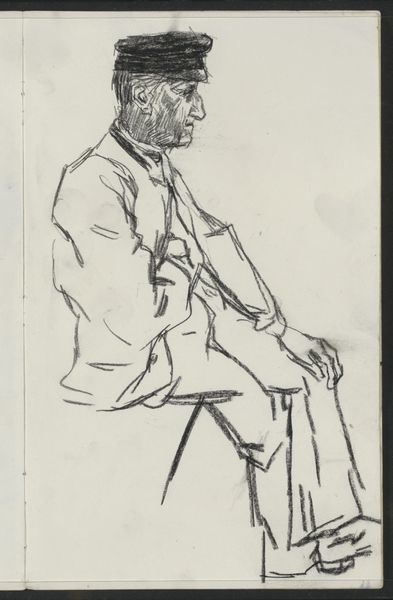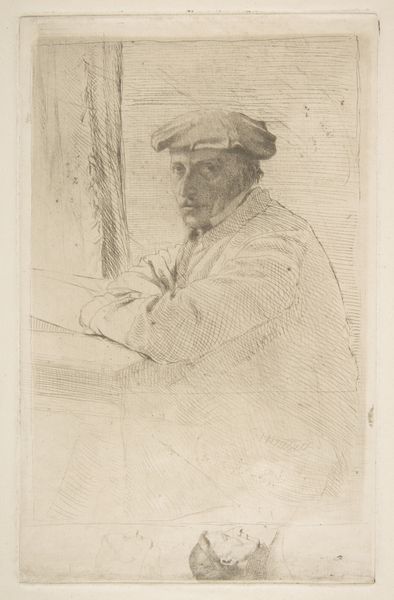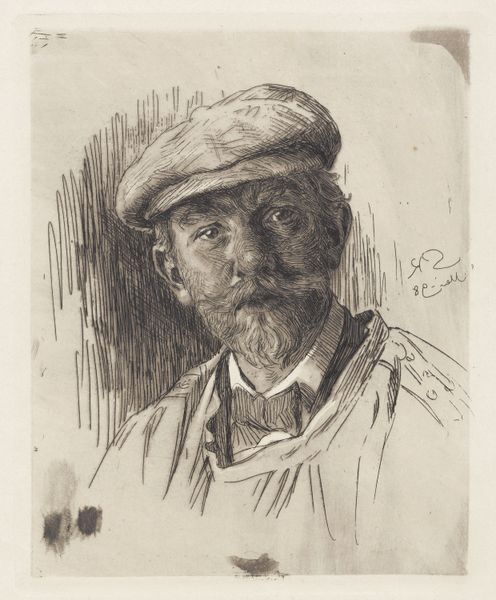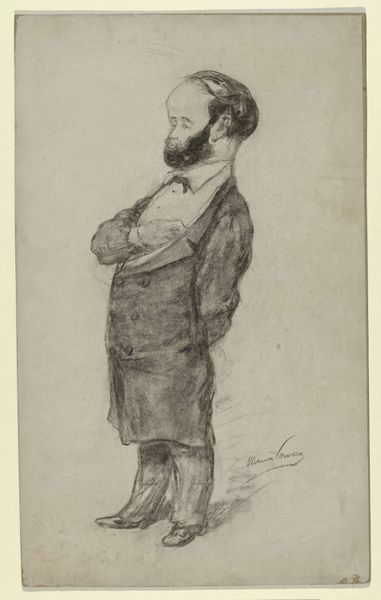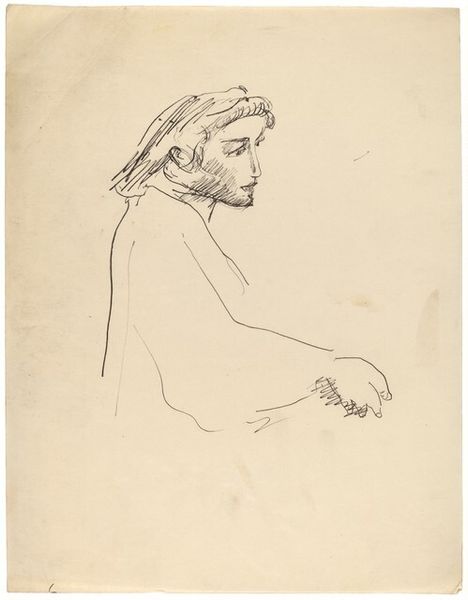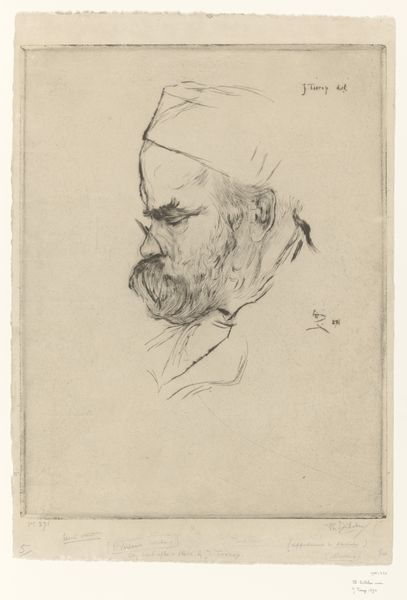
drawing, print, pencil, graphite
#
portrait
#
drawing
# print
#
impressionism
#
french
#
pencil sketch
#
pencil drawing
#
pencil
#
france
#
men
#
graphite
Dimensions: Sheet: 13 1/16 x 9 1/16 in. (33.1 x 23 cm)
Copyright: Public Domain
Editor: We're looking at "Édouard Manet, Seated, Holding His Hat", a pencil and graphite drawing by Edgar Degas, made sometime between 1863 and 1873. It's a very casual portrait, almost like a sketch. What do you see in it? Curator: I see a conversation, not just between Degas and Manet, but also between artistic processes. Graphite, in its very production, reveals layers. Here, look at how Degas exploits graphite’s potential to be smudged, erased, reworked, almost mirroring the socio-economic position of the sitter - Manet, comfortably bourgeois, yet perpetually crafting his own image within the emerging Impressionist movement. Notice the marks, erasures - signs of labor involved. Editor: That's interesting. So, you see the materials themselves as representing something larger than just the image? Curator: Precisely. The pencil, a mass-produced tool, democratizes image-making, yet this drawing remains a commodity, displayed in a museum. Think about the social conditions of artistic production at this time: Who had access to these materials? Who was portrayed, and by whom? The apparent casualness is deceptive. The materiality here serves to highlight the constructed nature of both art and identity, revealing power dynamics at play. Editor: So the choice of pencil over paint makes a statement in itself? It sort of levels the playing field between the artist and subject by documenting the artist's marks, labouring on the page... Curator: Absolutely. The unfinished quality invites us to consider the labour involved in creating not just the artwork, but also Manet's carefully constructed public persona. How do the visible marks and erasures relate to the way artists and intellectuals began exploring "authenticity" in industrialized France? Editor: That's given me a lot to think about. It changes how I see even a simple sketch like this. Curator: It is about recognizing art production’s intimate ties to its economic and social contexts. Hopefully that sheds a new light.
Comments
No comments
Be the first to comment and join the conversation on the ultimate creative platform.
